Warning: The magic method Vc_Manager::__wakeup() must have public visibility in /home/ezgoiran/public_html/wp-content/plugins/js_composer/js_composer.php on line 221
Warning: "continue 2" targeting switch is equivalent to "break 2". Did you mean to use "continue 3"? in /home/ezgoiran/public_html/wp-content/plugins/revslider/includes/operations.class.php on line 2858
Warning: "continue 2" targeting switch is equivalent to "break 2". Did you mean to use "continue 3"? in /home/ezgoiran/public_html/wp-content/plugins/revslider/includes/operations.class.php on line 2862

Cyrus Cylinder the First Declaration of Human Rights
January 23, 2020
A Journey through Iran Beaches from South to North
February 15, 2020House of Strength or Zourkhaneh a Place for Heroic Rituals
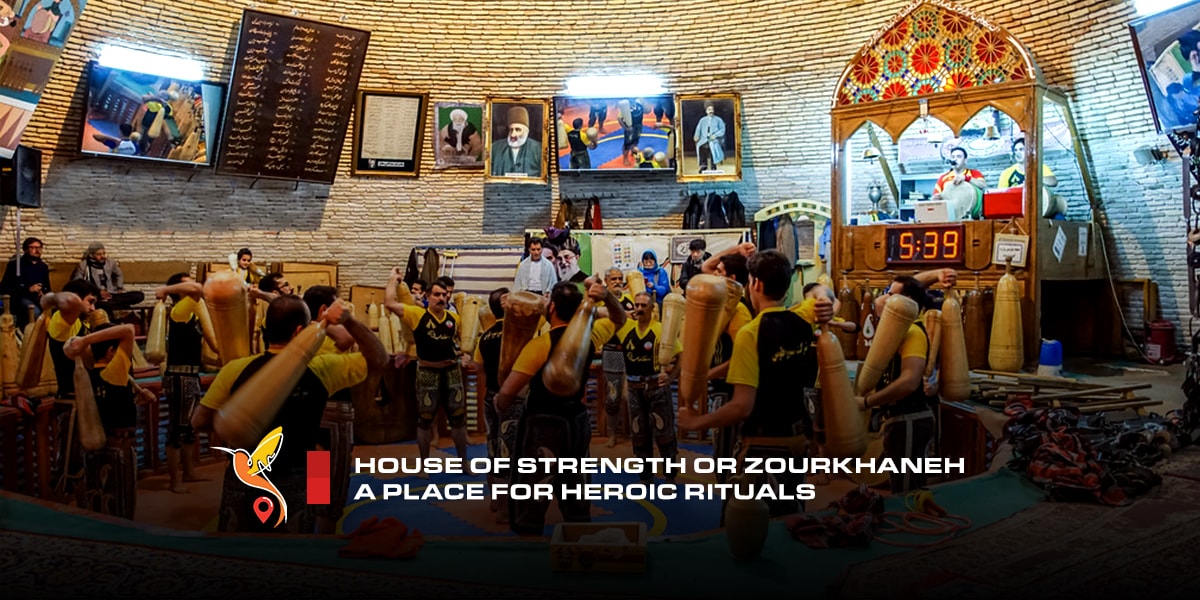
House-of-Strength-or-Zourkhaneh-a-Place-for-Heroic-Rituals-min
When you travel to Iran, one of the things that capture your attention is Zourkhaneh. It is uniquely Iranian and it is frequently offered. It is a kind of gym where athletes who perform traditional sports practice their art. You can see Zourkhaneh in many towns and cities in Iran, including Yazd, Tehran, and Isfahan. In fact, it is a special offer of many Yazd travel guides. In this article, we’re going to see what Zourkhaneh is.
Zourkhaneh rituals an Iranian ancient sport
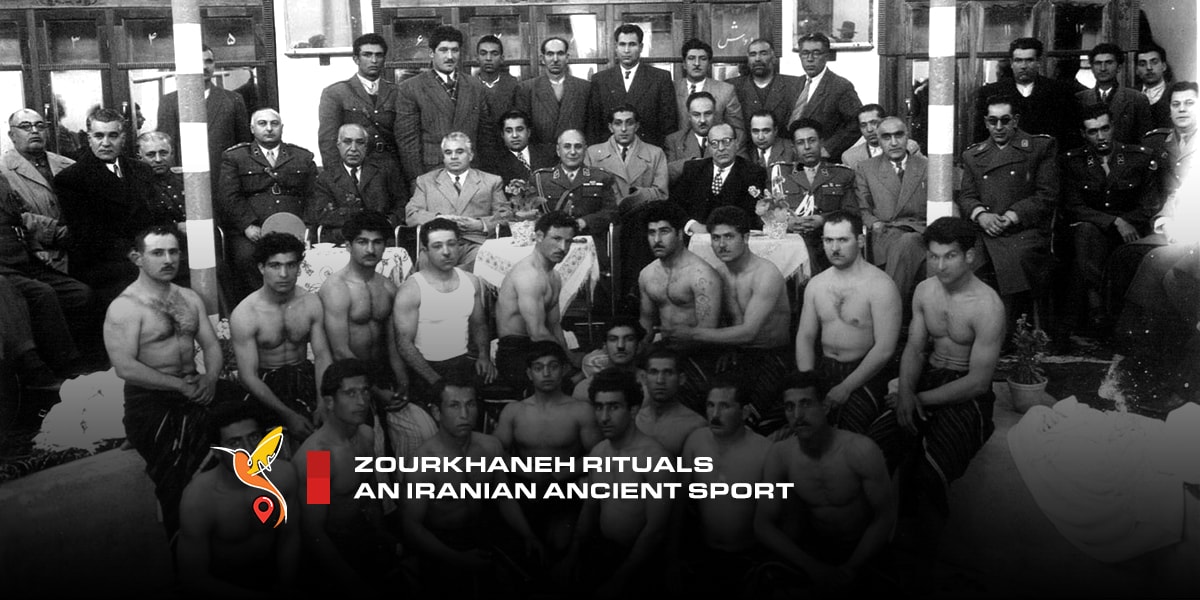
Zourkhaneh, or Pahlevani sport, is a combination of Persian martial arts and warfare. Traditionally, the athletes (Pahlevans) learned to be brave and behave as gentlemen. In fact, Zourkhaneh is a context where learnings from Islam, Zoroastrianism, and Mithraism come together to form rituals that promote the greatness of the soul. It is now one of the best representatives of what Islam is actually about that every Iran travel guide can explain it by details for you.
The origin and history of Zourkhaneh and Zourkhaneh rituals
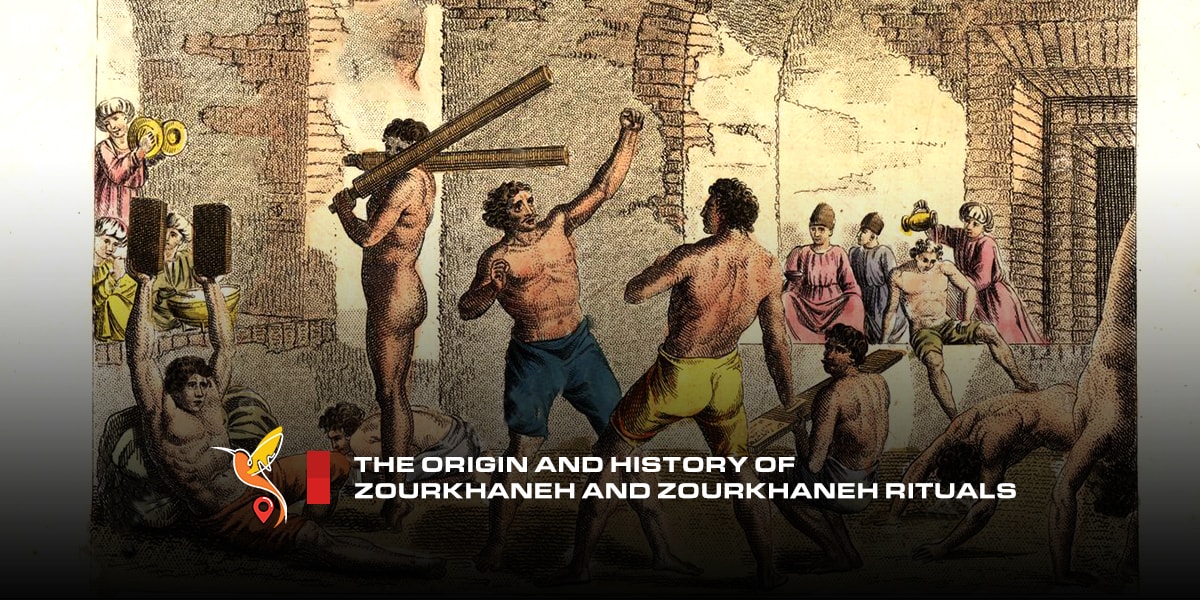
The history of it goes far back and beyond the documented historical events. Zourkhaneh emerged from Iranian mythology. In the pre-historic days, people used to learn how to fight in real-life, man-to-man practice battles. In Iran, this was always in combination with spiritual teachings. Young men learned to fight for what was just, and they never went beyond the borders of fairness.
Shahname and the codes of Pahlevani
In Shahnameh, which is a mixed account of history and mythology, you can see many heroes (Pahlevans) who practice the code of Pahlevani. This code includes fairness, justice, good deeds, and also bravery and aggressiveness in war. A huge part of the Pahlevani code comes from Shahnameh.
Zourkhaneh and Pahlevani from old Persia
The word Pahlevan itself comes from old Persian. Apparently, the first use goes back to the Parthian Empire. In every family and tribe, there was at least one Pahlevan, a man superior in force and martial arts. They followed the three maxims of Zoroastrianism: Good Thought, Good Speech, and Good Act.
At the time, Pahlevans fought the Greek soldiers and local rulers. These were the remainders of Alexander’s siege of the Persian Empire. The story of some of these Pahlevans remained within the oral tradition of legends. For many years, people told these stories in their gatherings.
Zourkhaneh rituals during the Safavid era
With the emergence of Safavids and the introduction of Islam, things changed. Islam transformed Pahlevani codes and, in many ways, improved them. It was now a place were Pahlevans tried to show their faith in many aspects of Islam. Imam Ali, as the role model of Pahlevani, became a central figure in all Zourkhaneh rituals. He is, to all Muslims, the embodiment of true Pahlevani codes: justice and bravery.
Qajar era and the illustration of Zourkhaneh in Iran
People made many Zourkhanehs in the Qajar period. A good number of them in many towns of Iran are from that era. In the Qajar period, a politically and socially intense climate influenced Persian life. The conflict between the dynasty and people who wanted justice and fairness in society revived Pahlevani traditions again. The first encounters with the modern west maximized this revival.
Fading out Zourkhanehs during Pahlavi era
In Pahlavi, Zourkhaneh became more a symbolic place than a real-life place. It means that, while the Pahlavi regime emphasized it as a cultural artifact, Zourkhaneh itself was becoming less and less influential on people’s everyday life.
Revolution and the destiny of Zourkhaneh
However, as the revolutionary climate was taking over Iranian society, Zourkhaneh again became a source of inspiration to all classes of society. Pahlevani codes were once more in demand to redeem the society from injustice.
After the revolution, people recognized Zourkhaneh as the culmination of Iranian and Islamic values which had a crucial role in the promotion of revolutionary ideals. That was the primary reason why the Islamic Republic of Iran introduced it as the symbol of Iranian culture and pride.
Zourkhaneh rituals a UNESCO heritage
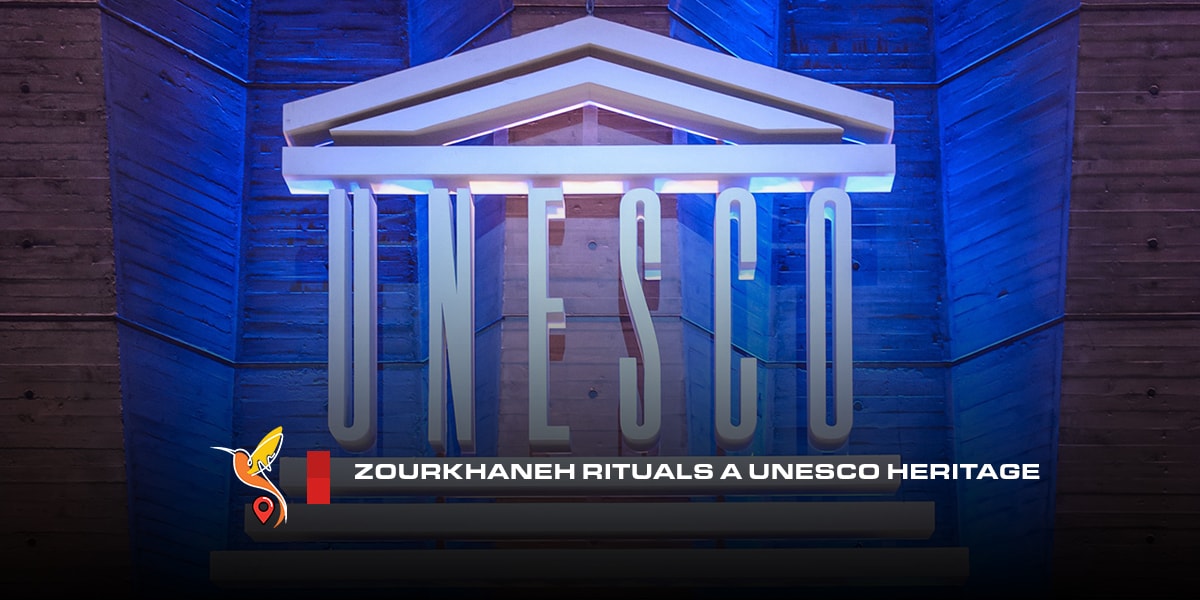
On November 16, 2010, the UNESCO registered a Zourkhaneh as Iranian cultural heritage. Also, in the German Brockhaus Enzyklopädie, citing research by the German Sports University in Cologne, introduces Zourkhaneh sport in the main book, the volume of Sports, as the world’s oldest bodybuilding sport. In 2008, Zourkhaneh received the title of the Ninth National Spiritual Heritage in Iran. Also, in that year, the first World Championships in Ancient Sports were held in Korea.
The structure of Zourkhaneh
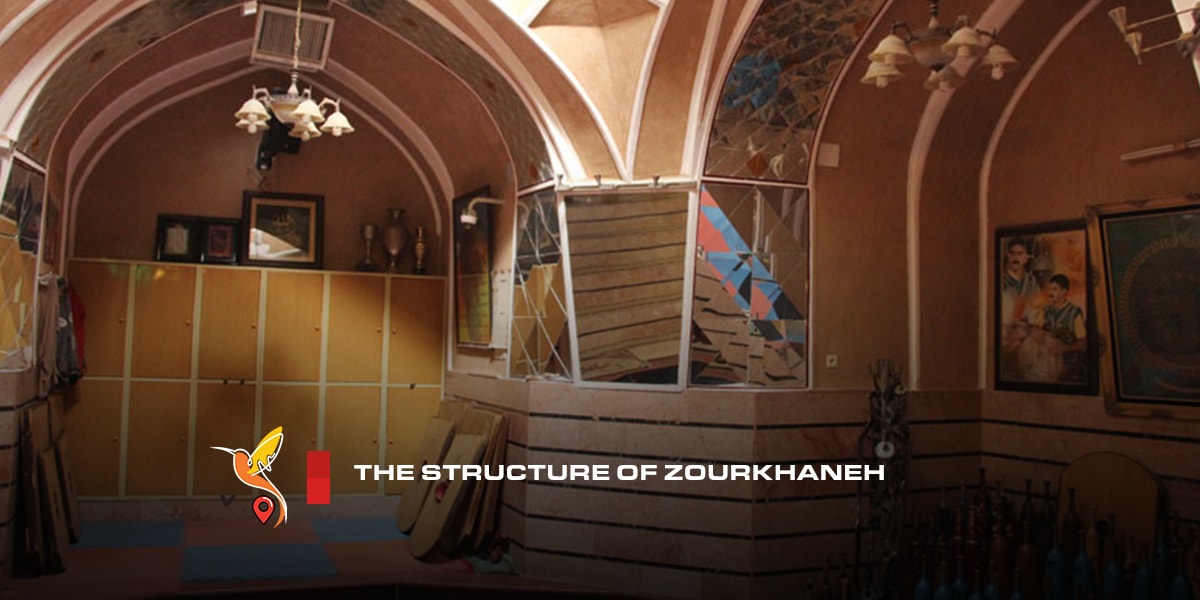
Zourkhaneh has a special structure. It has short doors so that the athletes need to bend when they arrive in. Its place is below the street level so that it always has a balanced temperature. Its shape is like a mosque with a dome roof, with the center of the roof and the main field facing symmetrically. It causes the structure to rotate from the bottom to the top.
At the entrance, there is a large black and white image of a Pahlevan on the wall. After a narrow path, is the main gym. The ditch (Gowd) is lower compared to the hall. On one side, there is the position of the Master (Morshed), the highest point in Zourkhaneh. Everyone enters with the permission of the Master. The platform around Zourkhaneh is for the spectators to sit and watch the sport, which is a mixture of Muslim and Iranian religious traditions.
Gowd at the center of Zourkhaneh
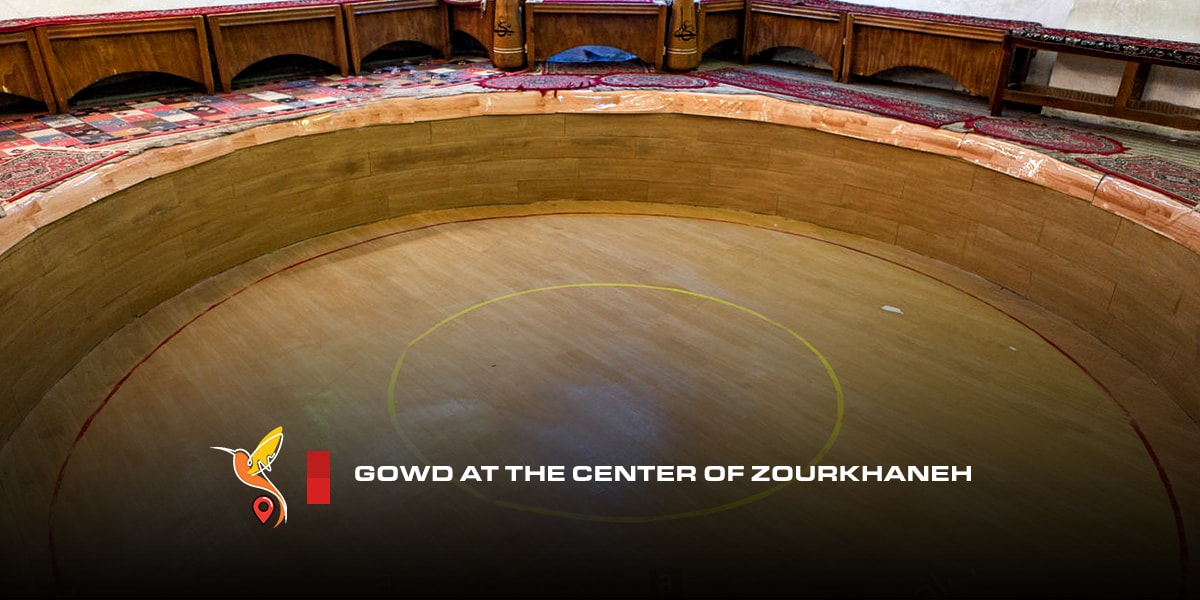
A circular ditch with a mattress constitutes the main field so that athletes are safe from injury. Gowd is lower than the surface. This makes the athlete feel humble. According to Islamic laws, a select few can enter the field. When they enter the field, they kiss the ground and perform the “salam” ritual by putting their hand on their heart. Then, they perform a kind of dance-like move tuned to the singing of the Morshed. The way the members move in the ditch is very important. Newcomers stand in opposition to the Master because they have to pay attention to the Master and model him. Over time, they change places to the left and right positions so that there is room for newcomers. The experienced are now under Sardam.
Who is Morshed in Zourkhaneh?

The Master is the leader of Zourkhaneh and recites mythical and ethical poems to raise the athletes’ spirits. The Master must have complete information about the tradition and history of the sport. Among the duties of the Master is chivalry, and this is not confined to Zourkhaneh. Athletes, thus, must ask for his permission for entering the field and for starting to practice. Even outside Zourkhaneh, when they see Morshed, they respect him and ask his permission to do anything they want to do.
Where is Sardam in Zourkhaneh?
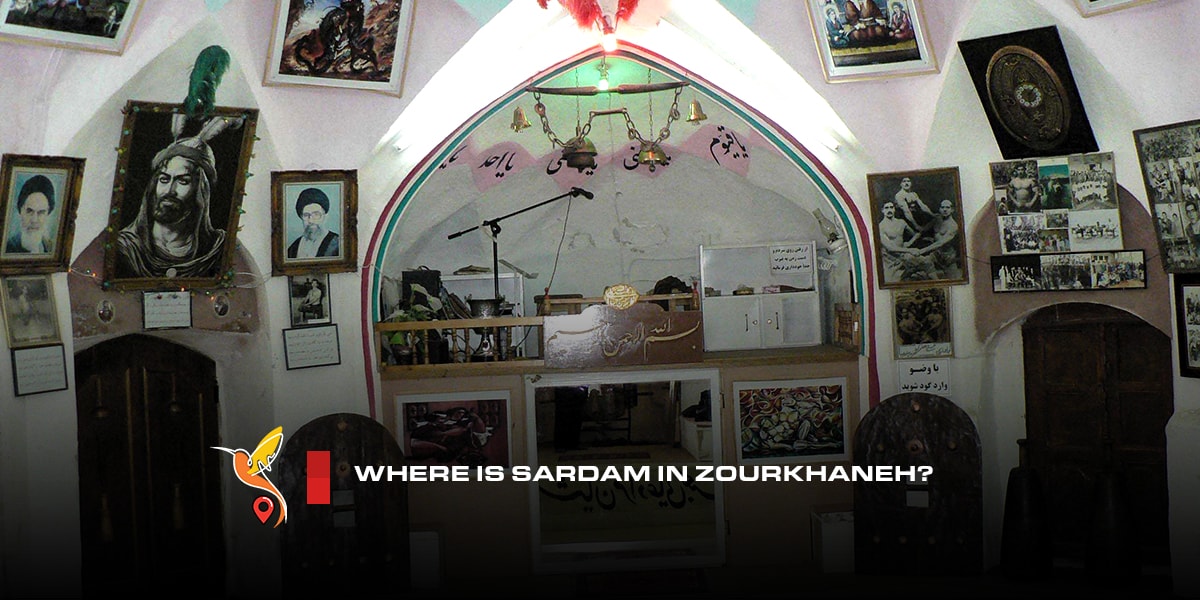
This is where the Master sits and directs the exercises and plays the beat. It is also the place where he preserves and performs the customs of Zourkhaneh. It is usually decorated with peacock feathers and pigeons and represents the warriors and commanders who usually used these feathers in their hats. There is a bell hanging in front of the master. The master rings the bell to signal his permission. Also, the bell signals the entrance of a prominent person, usually an old champion, into Zourkhaneh and the Master uses it to signal the intermissions.
The way of doing Varzesh-e Pahlavani
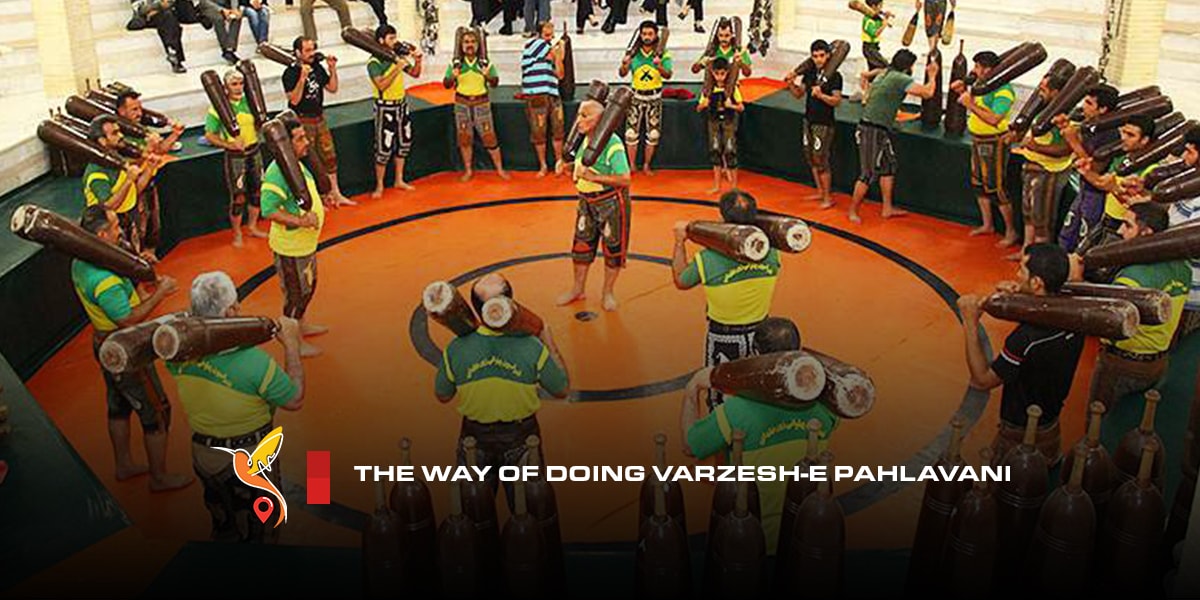
Under the direction of Morshed, Varzeshe-e-pahlavani begins. The athletes usually perform the first moves while lying down. These moves include certain kinds of push-ups. The next set of moves is in the form of sitting and/or bowing. The final moves demand to stand. This movement from lying down to standing up symbolizes the phases of development in humans – from infancy to adulthood. As the sets transform into each other, the moves themselves become harder to perform.
While the athletes perform the moves, Morshed recites mythical poems and stories and beat become in a more exciting manner. He also praises the athletes in the field. The Pahlevani wrestle is the last phase of performance. Now the heroes are ready to fight each other while keeping to the codes of chivalry and fairness.
The equipment of Varzesh-e Pahlavani
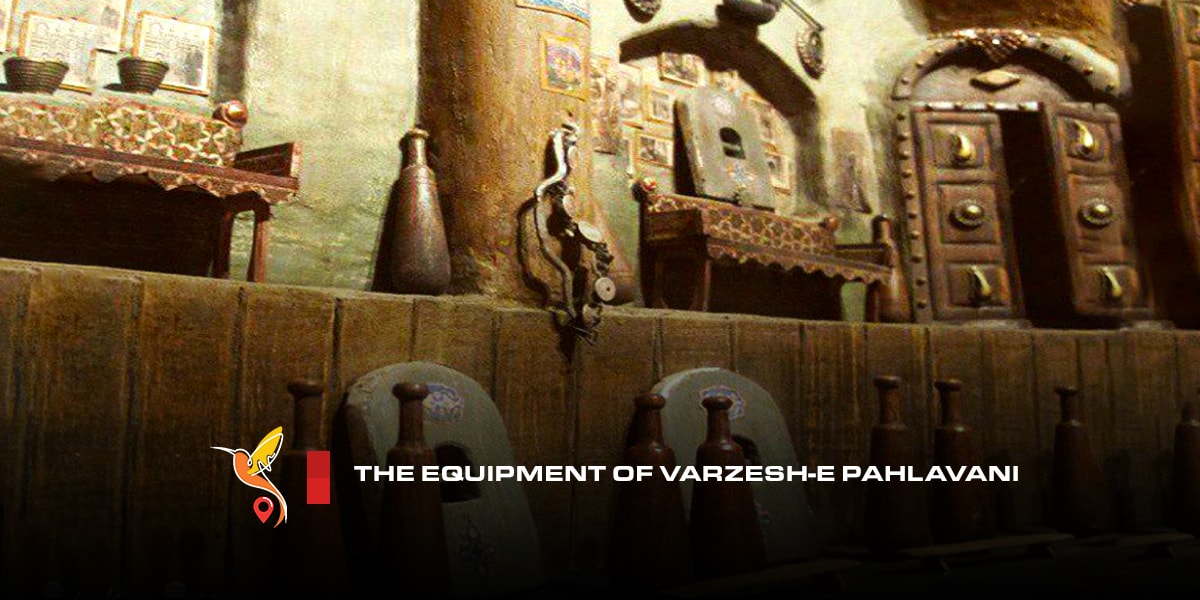
The equipment that athletes use includes Meel, Kabbadeh (or the bow of chains), and stone.
Zourkhaneh Meel
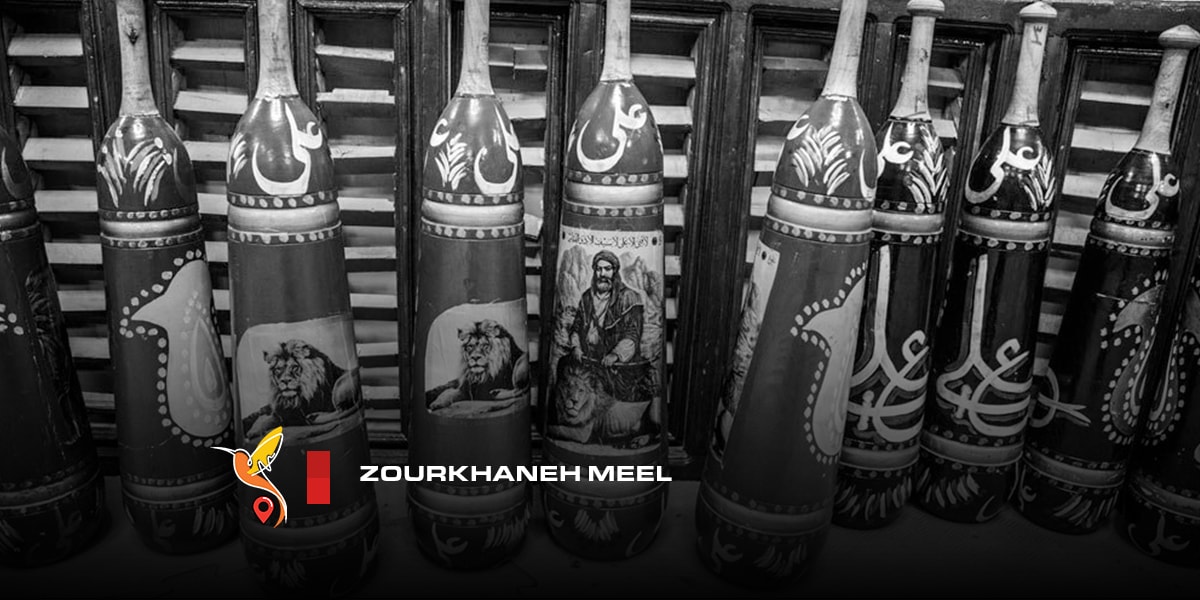
Meels are very similar to mace. In fact, Meels symbolize maces in the hands of the athlete. The leader of the athletes stands in the middle of the field holding a Meel in each hand. Tuned to the singing of Morshed, he performs certain moves and others must follow.
There are three types of Meel. The large ones are the heaviest. The athletes perform slow moves by moving each one around their shoulders while keeping the other in front of the chest or on the corresponding shoulder. The hammer-like ones are smaller. These are for similar moves which are faster. The smallest kind, which is called Meel-e-Jofti (pairs) is for performing simultaneous moves with the two.
Kabbadeh or the bow and chain

Kabbadeh is a bow made of iron and chains. The athlete makes certain moves with it. The main move is moving it to the left and right over the head. It is not easy because Kabbadeh is very heavy. The moves remind you of a person trying to shoot arrows with a bow. In the past, the soldier had to shoot over 100 arrows in a very short time.
Stone in Zourkhaneh
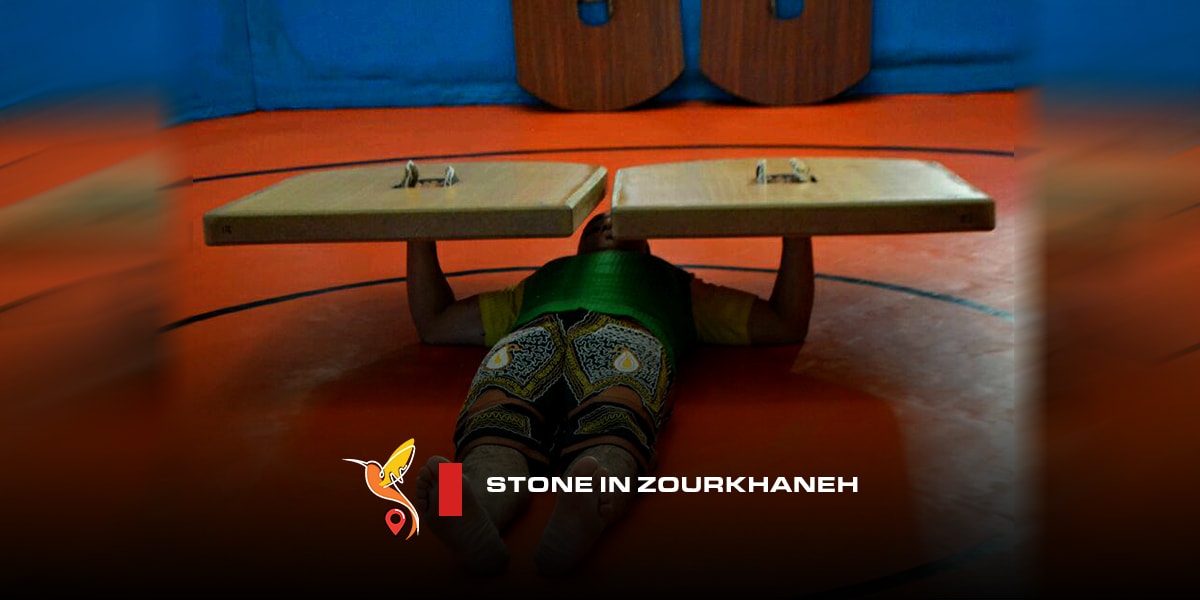
Holding two big, flat stones is another performance. The athlete lies down and holds two stones on his chest. These are very heavy. He must move them rhythmically up to 114 or 117 times. Morshed counts the number. Sometimes, a friend who stands close to the athlete does the counting. 117 refers to the number of followers of Imam Ali in a historical story. 114 refers to the number of Surahs in the Quran.
What is Golrizan ceremony in Zourkhaneh
There are two types of Zourkhaneh, private and public, and sometimes even private ones do not receive much money from athletes and are funded through public assistance. One of these ceremonies is Golrizan (the shedding of flowers). They perform this ceremony on special occasions like certain eves and the birthdays of Imams, but it is not uncommon to perform Golrizan on an ordinary day too. The ceremony is a fundraising ritual. Two young athletes hold a long piece of cloth (laung) in front of the participants so that they put money in it. The money collected throughout the ceremony goes to the person who needs it. This person might be an athlete or the money might go into maintaining Zourkhaneh. In exchange for these aids, the Zourkhaneh services and community protection were recognized as informal police in the past.
Zoroastrian beliefs about Zourkhaneh and Varzesh-e Pahlavani

Zoroastrians believe that the physical and mental development leads to enhancement of spirituality. Therefore, Zourkhaneh performances promote kindness, fairness, and humility by developing the body’s strength. Under the supervision of Morshed and an old athlete, students learn traditional ethics and chivalry values and codes. Participants should be pure, honest, fair, and good-tempered first. Only then they can become strong in the body and claim that their strength is important to society. Getting to the rank of Pahlevan is not easy. It demands mastery in the physical skills and keeping to the religious principles and teachings.
Imam Ali the symbol of the world’s first Pahlavan or hero
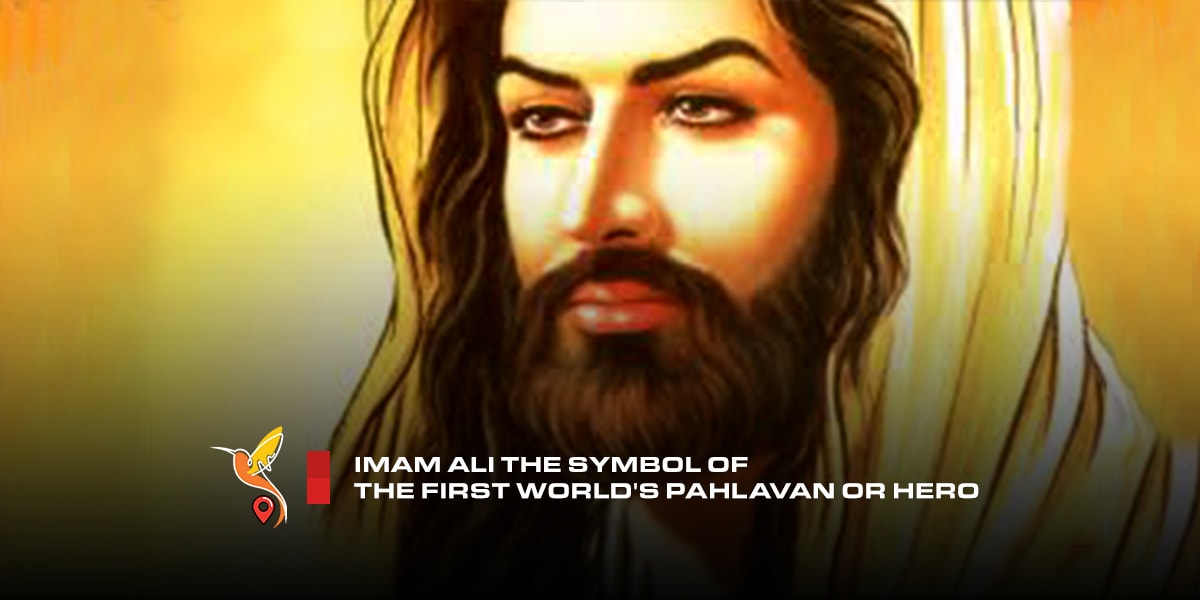
Imam Ali, the first Imam of Shiia, is the first Pahlevan of Islamic Iran. He did many great deeds, and he is famous for his justice, bravery, chivalry, and wisdom. He is the role model of the Pahlevani tradition in Iran. Stories of his greatness are inseparable from Zourkhaneh. Morshed recites these stories every time it is in session. A portrait of Imam Ali is on the wall of every Zourkhaneh in Iran.
The relation between Zourkhaneh and Sufism

As we said, Zourkhaneh sport is not just about the body. It’s also about the heart and soul. Sufism is thus closely related to it. Professor Sahfiei Kadkani, the great Persian literature professor, once said mysticism is where art meets religion. Sufism, the most prominent form of Persian mysticism, takes Imam Ali as the role model and tries to help the individual be pure in the heart and soul. Over the course of time, Sufism teachings such as living a simple life have had a lasting influence on Zourkhaneh.
The common rituals between Zourkhaneh and Sufism
Both Zourkhaneh and Sufism have the same rituals that emphasize the purity of the heart and soul (such as the words they both use: Morshed (the master), the senior, crown, poverty, and chivalry). The Zourkhaneh people must know themselves to be the people in public service and they should help the public. They should not see themselves as superior to anyone but should be humble and self-sacrificing. They have to help the underprivileged through the help provided by the affluent families in the Zourkhaneh. Like the Sufis, they are brothers, and they have a duty to guard each other, and this is one of the tenets of Zourkhaneh.
The rank of athletes on Zourkhaneh
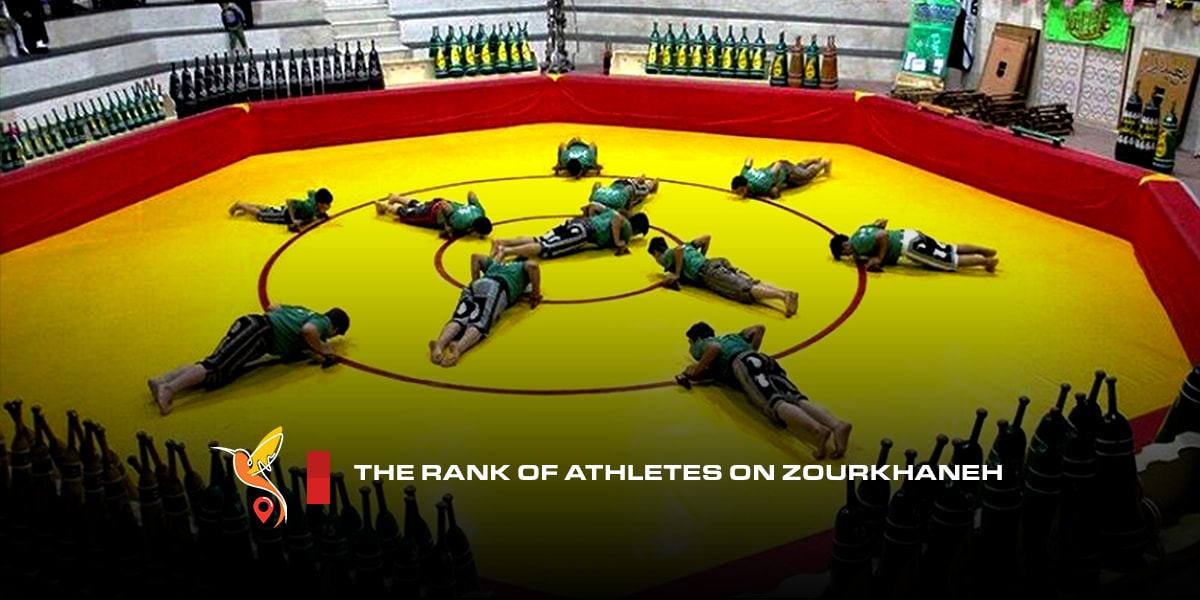
Rank one (Nocheh): The athlete receives the rank after one year of exercising. Now, whenever he performs a spinning act, Morshed curses Imam Ali’s enemies and the participants say “May it (the curse) never lessen in number”.
Rank two (Nowkhasteh): Morshed recites Salavat for him after three years of training. This happens every time he does the spinning.
Rank three (Pahlevan): Morshed recites Salavat for him after six years of training and at least eighteen years of age. Now, this happens whenever he comes in and goes out of Zourkhaneh.
Rank four to six
Rank Four (Pahlevan of Pahlevans): Morshed recites Salavat for him after twelve years of training and at least twenty-two years of age. This happens whenever he comes in and goes out of Zourkhaneh.
Rank Five (Pahlevan-e-Zoorgar): Morshed plays the beat for him after fifteen years of training and at least twenty-five years of age. This happens whenever he comes in and goes out of Zourkhaneh.
Rank Six (Pahlevan of the City): Morshed plays the beat for him after eighteen years of training and at least twenty-eight years of age. This happens whenever he comes in and goes out of Zourkhaneh.
Rank seven to nine
Rank Seven (Pahlevan of the Country): Morshed rings the bell for him after twenty-four years of training and at least thirty-two years of age. This happens when he performs a spinning act.
Rank Eight (Pahlevan of the World): Morshed rings the bell for him after thirty-two years of training and at least forty-two years of age. This happens when he ascends and descends in and out of the field.
Rank Nine (Javanmard): Morshed rings the bell for him after forty-five years of exercise and at least sixty-five years of age when they come and go through the Zourkhaneh Gate. The number of these athletes is very low in the country.
Athletes’ attire in Zourkhaneh

All athletes wear Laung or shorts with certain designs. All athletes wear the same thing to show their equality above the rank and file of the Zourkhaneh.
Music and poem in Zourkhaneh
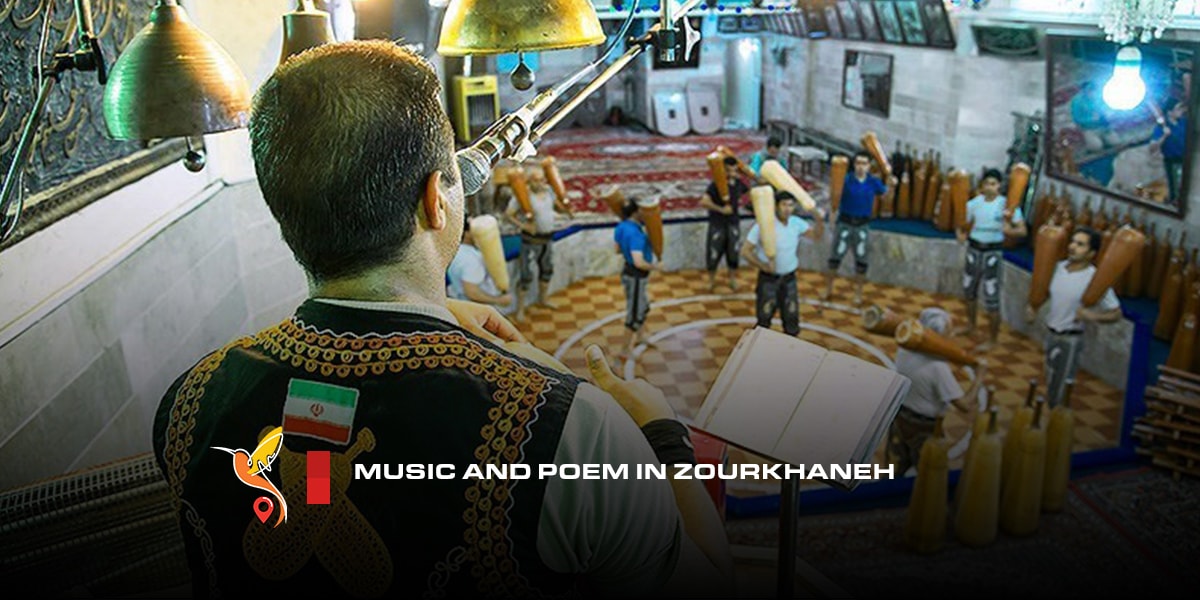
Music is an important element in Zourkhaneh. It reminds ethics and religion to athletes and boosts their energy. In Zourkhaneh, there are two types of contemporary poetry and a Shahnameh. Contemporary poetry can be written by a Morshed or another poet and recited on special occasions such as the death of a hero. Old poems are recited on sad occasions such as the death of a member of the Zourkhaneh and commemorations. The day of Imam Ali’s martyrdom, which is during the month of Ramadan, and also the month of Muharram, are occasions on which Morshed recites sad poems. It’s called Homayoun. It is the name of the type of Iranian music that Morshed plays and sings. He spends a lot of time learning it.
The most famous athletes of Zourkhaneh
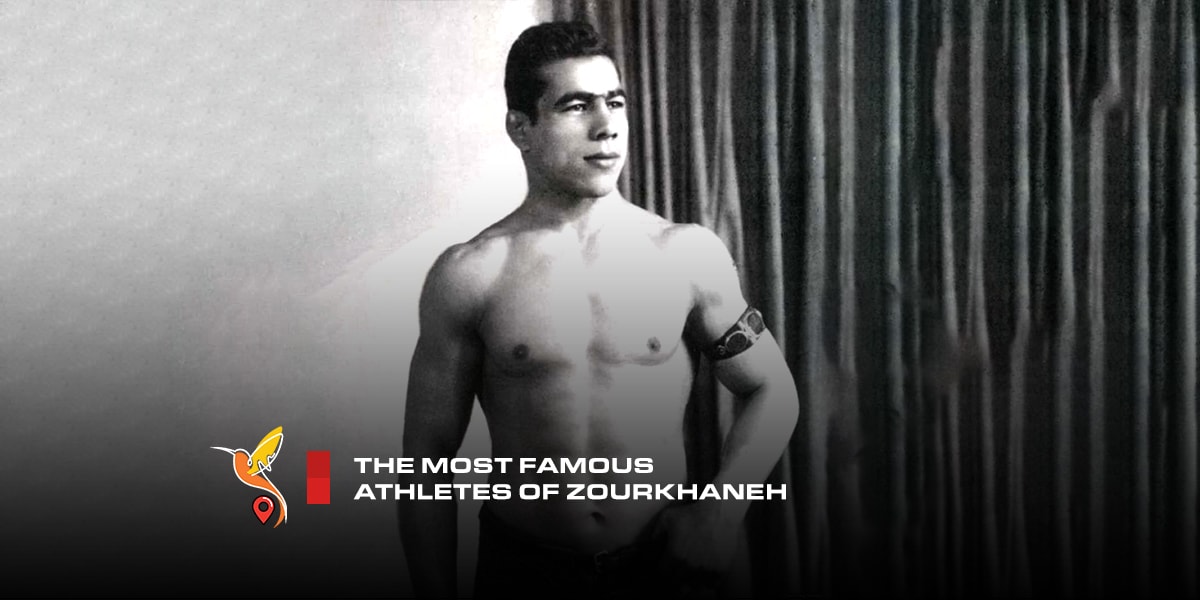
Pahlevan Takhti was a famous contemporary Zourkhaneh athlete. He won world medals in wrestling and was famous for his kindness and chivalrous acts. Shaban Jafari was also a famous Pahlevan who helped the Islamic revolution to achieve victory. He used his influence over his friends to convince them to fight Shah’s followers. In the Pahlavi era, Zourkhaneh had a political tendency and a person like Jafari could be a key person in political issues. He was executed because of his revolutionary fights.
In the era of the Iran-Iraq fight, many Pahlevans left Zourkhaneh to go to war. After that, their places gradually closed down.
The legendary hero of Zourkhaneh

Pouriay Vali is a legend among Zourkhaneh Pahlevans. He died around 1322 CE. Nobody knows the exact place of his tomb. Many believe, however, that he lived and died in Salmas, Khoy. At the time of his living, he was a great Sufi and the most famous wrestler in Iran. Even when he was alive, people told his stories to their children.
But what made him a legend was not his greatness at wrestling or the stories people told about him. It was an act of favor towards a poor boy. The boy, who came from a poverty-stricken family, falls in love with the daughter of the ruler of the city, who is the richest and most powerful man in the town.
The marriage story of a poor boy and the ruler daughter
When the boy tells his secret to his parents, they refuse to do anything about it. But when they see how miserable their son has become, they reluctantly agree to ask the ruler for his daughter. The ruler, who doesn’t want to break their heart by saying a direct “no”, put forward a condition: “Your son must wrestle with Pouriay Vali”, says he, “and if he wins, I consent to the marriage of your son and my daughter”. When Pourya accidentally finds out about this, he makes up his mind to lose the fight. The boy marries the ruler’s daughter, and Pourya’s fame fades into the years to come.
After his death, people found out about this story and he became a legend. His ten commandments are famous in Zourkhaneh.
Zourkhaneh in Iran cities

There are few Zourkhaneh places left in Iran. Tehran is home to 50 places. The most famous one is Shahid Fahmideh Zourkhaneh in Park-e-Shahr. They are still active in other cities, too. Yazd, Isfahan, Kermanshah, and Arak are among the places which have great ones. Iran tailor-made tours to these cities include visits to prominent Zourkhaneh places.
Zourkhaneh in other countries
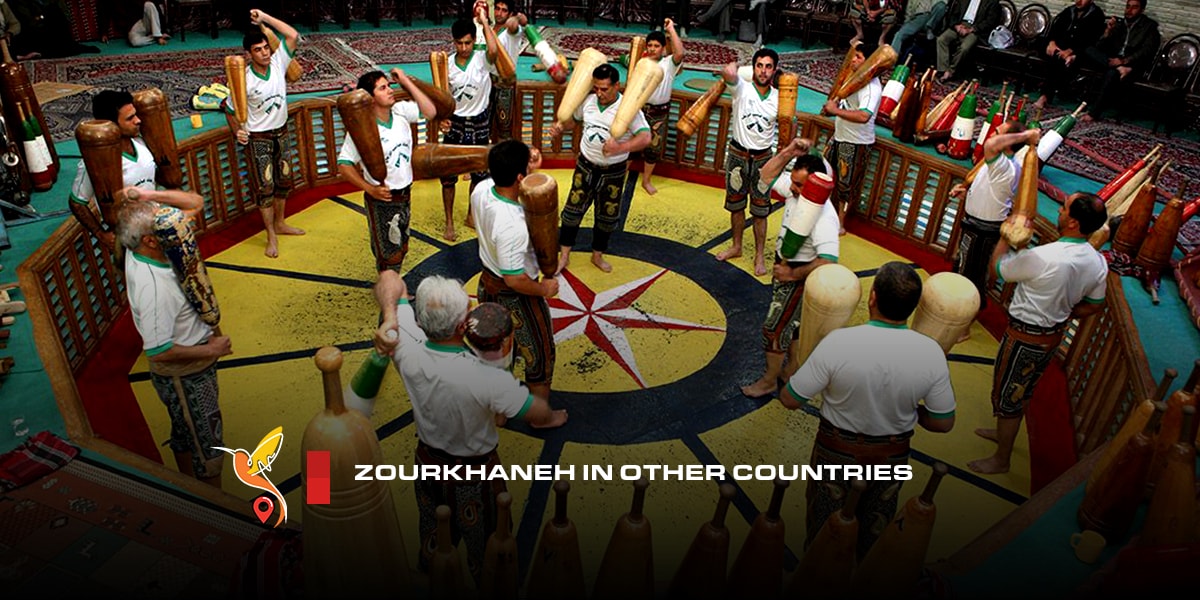
The International Zourkhaneh Sports Federation (IZSF) has 72 countries as members. It was established in 2004 and promotes Zourkhaneh sport at an international level. Iran built Zourkhaneh in Azerbaijan, Afghanistan, Tajikistan, and Pakistan. It was also introduced to Iraq in the mid-19th century and existed there until 1980.
When you visit Iran next time, make sure your cultural tour includes a visit to Zourkhaneh. You will be welcomed into a deep, spiritual culture of love and fairness. The visit will definitely lift your soul.
Related posts
We're Authorized & Qualified by

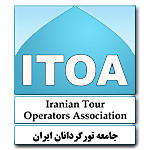
 Iranian E-Tourism Association
Iranian E-Tourism Association



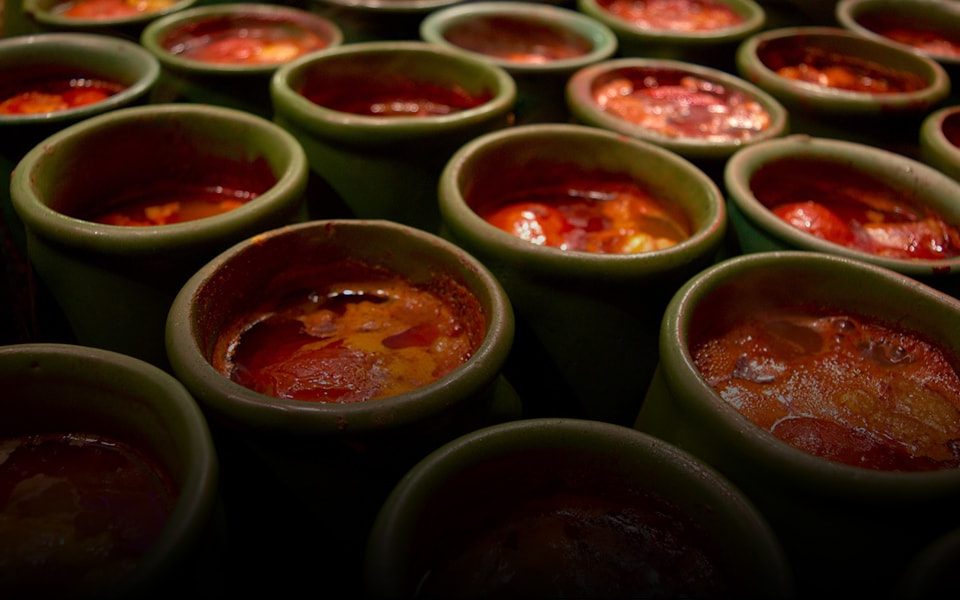
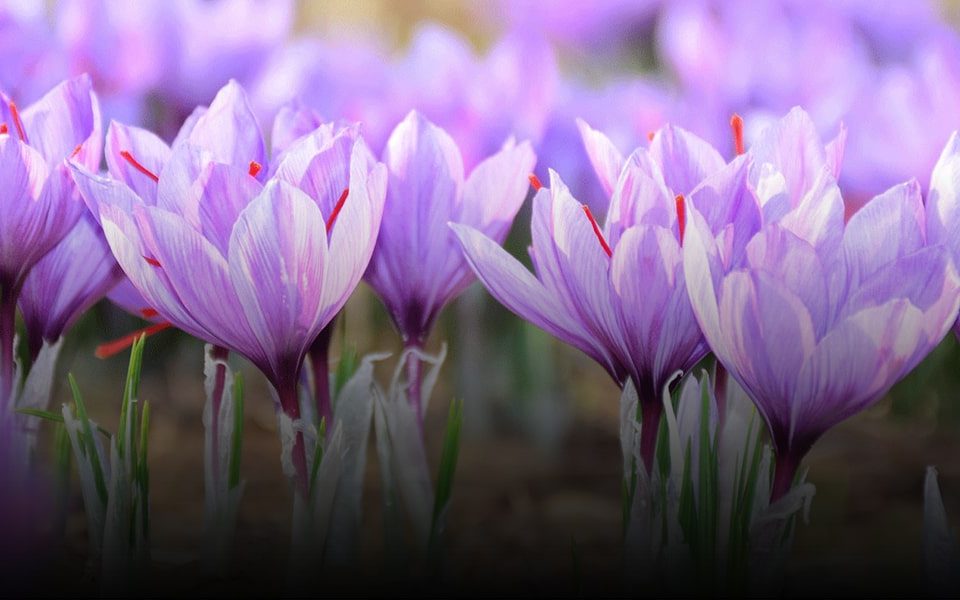
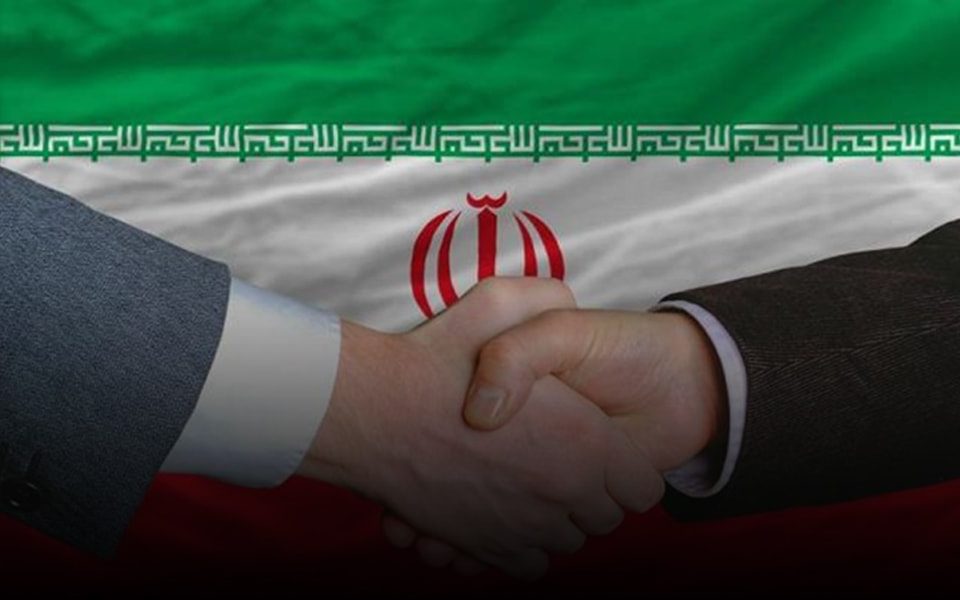
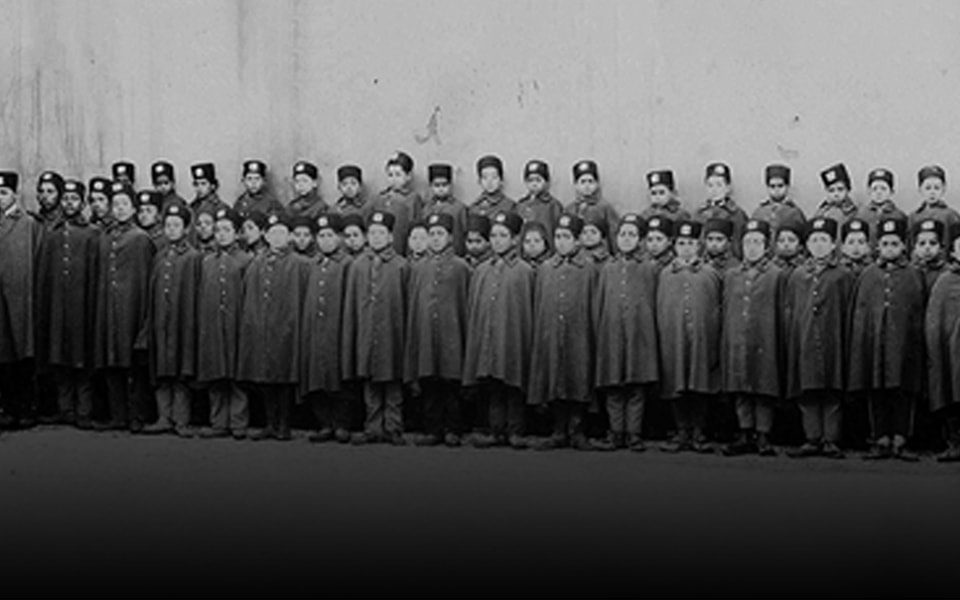
33 Comments
The M1113 ECV is utilized in particular operations missions and as a communications shelter service.
Bwer Company is a top supplier of weighbridge truck scales in Iraq, providing a complete range of solutions for accurate vehicle load measurement. Their services cover every aspect of truck scales, from truck scale installation and maintenance to calibration and repair. Bwer Company offers commercial truck scales, industrial truck scales, and axle weighbridge systems, tailored to meet the demands of heavy-duty applications. Bwer Company’s electronic truck scales and digital truck scales incorporate advanced technology, ensuring precise and reliable measurements. Their heavy-duty truck scales are engineered for rugged environments, making them suitable for industries such as logistics, agriculture, and construction. Whether you’re looking for truck scales for sale, rental, or lease, Bwer Company provides flexible options to match your needs, including truck scale parts, accessories, and software for enhanced performance. As trusted truck scale manufacturers, Bwer Company offers certified truck scale calibration services, ensuring compliance with industry standards. Their services include truck scale inspection, certification, and repair services, supporting the long-term reliability of your truck scale systems. With a team of experts, Bwer Company ensures seamless truck scale installation and maintenance, keeping your operations running smoothly. For more information on truck scale prices, installation costs, or to learn about their range of weighbridge truck scales and other products, visit Bwer Company’s website at bwerpipes.com.
I absolutely love your blog.. Pleasant colors & theme. Did you build this website yourself? Please reply back as I’m wanting to create my very own website and would like to find out where you got this from or exactly what the theme is called. Thank you!
I enjoy looking through a post that will make people think. Also, thanks for allowing for me to comment.
Hi, I do believe this is an excellent website. I stumbledupon it 😉 I am going to come back once again since I bookmarked it. Money and freedom is the greatest way to change, may you be rich and continue to help other people.
Excellent article! We are linking to this particularly great post on our site. Keep up the good writing.
The Web’s complexity has left customers with limited choice between three large players with conflicts of interest whose positions develop extra entrenched with time.
Augustine would return to Virginia months later and uncover that his spouse had died, leaving daughter Jane in the care of the prolonged Washington household in Westmoreland County.
That is the very best French meritorious army award, and was established within the 19th century by Napoléon Bonaparte.
“Harold E Ring passed away Friday, Sept 30, at Idaho Falls , Idaho , a sufferer of cardiac arrest.
The first is a photo-catalytic impact, in which ultra-violet rays catalyse the breakdown of natural compounds on the window floor; the second is a hydrophilic effect by which water is drawn to the floor of the glass, forming a thin sheet which washes away the damaged-down natural compounds.
Survivors embrace one son, Paul Leon Fretz of El Paso, Texas; one daughter, Janice Kay Dunagan of Seminole; three grandchildren; eight nice-grandchildren; one great-great-grandchild, with twins on the way in which.
A typical sequence of the Monkey’s Bum Deferred is 1.e4 g6 2.d4 Bg7 3.Nc3 c6 4.Bc4 d6 5.Qf3 (see diagram).
2022 County Information Sheet, Burlington County, New Jersey.
Your article helped me a lot, is there any more related content? Thanks!
Midway through the season although, reviews got here out suggesting that two Main League Soccer groups have been attention-grabbing in Chhetri, alongside with his international teammate Steven Dias.
Store from an unlimited assortment of beautifully designed, handcrafted Sterling Silver & Silver Plated products.
Hi there! I could have sworn I’ve visited this site before but after looking at some of the posts I realized it’s new to me. Nonetheless, I’m certainly happy I discovered it and I’ll be book-marking it and checking back regularly!
This is the appropriate weblog for anybody who wants to discover this topic. You understand a great deal its nearly tough to argue with you (not too I actually would want…HaHa). You certainly put the latest spin using a topic thats been discussing for several years. Great stuff, just wonderful!
BWER Company provides Iraq’s leading-edge weighbridge solutions, designed to withstand harsh environments while delivering top-tier performance and accuracy.
Aw, this was a very nice post. Taking the time and actual effort to generate a good article… but what can I say… I put things off a lot and don’t manage to get nearly anything done.
Discovering the precise spot to host the corporate events in White Plains is the important thing to making certain your targets.
Imagine this: You’re an orchestra conductor, and each key on your typewriter is a musician ready to your signal.
On-line Dwelling Decor Retailer in India : Our Home decor gadgets mix traditional techniques with trendy designs & trending natural supplies.
A canine paw tattoo is unquestionably the most stylish option to pay tribute to the animal that has been known as “man’s finest friend.” These intelligent adornments exude a heavenly sweetness that much body artwork lacks these days.